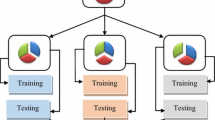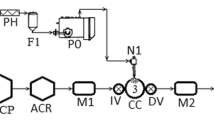Abstract
The development of a neural net system for fault diagnosis in a marine diesel engine is described. Nets were trained to classify combustion quality on the basis of simulated data. Three different types of data were used: pressure, temperature and combined pressure and temperature. Subsequent to training, three nets were selected and combined by means of a majority voter to form a system which achieved 100% generalisation to the test set. This performance is attributable to a reliance on the software engineering concept of diversity. Following experimental evaluation of methods of creating diverse neural nets solutions, it was concluded that the best results should be obtained when data is taken from two different sensors (e.g. a pressure and a temperature sensor), or where this is not possible, when new data sets are created by subjecting a set of inputs to non-linear transformations. These conclusions have far reaching implications for other neural net applications.
Similar content being viewed by others
Explore related subjects
Discover the latest articles, news and stories from top researchers in related subjects.References
Murayama T, Miyamoto N, Gotoh S. Estimation of an indicator diagram-method by the stresses measurement of cylinder head bolts. Bull Marine Eng Soc Japan 1979;7:81–90
Banisoleiman K, Smith LA, Matheieson N. Simulation of diesel engine performance. Trans Inst Marine Eng 1993;105:117–135
Gopinath OC. A neural net solution for diesel engine fault diagnosis. MSc thesis, University of Sheffield, 1994
Duyar A, Merrill W. Fault diagnosis for the space shuttle main engine. J Guidance, Control and Dynamics 1992;15:384–389
Boek MJ. Experiments in the application of neural networks to rotating machine fault diagnosis. IEEE Int Joint Conf Neural Networks. Singapore 1991: 769–74
Lihovd E, Ramussen M. Neural networks in condition monitoring and diagnosis on rotating machinery. 10th Ship Control Systems Symposium, Ottawa, October 1993
MacIntyre J, Smith P, Harris T, Brason A. Application of neural networks to the analysis and interpretation of off-line condition monitoring data. 6th Int Symposium on Artificial Intelligence, Monterrey, Mexico, 1993
Sharkey NE, Partridge DP. The statistical independence of network generalisation: an application in software engineering. In PG Lisboa, MJ Taylor, eds, Neural Networks: Techniques and Applications. Ellis Horwood, Chichester, 1992
Partridge D, Sharkey NE. Neural computing for software reliability. Expert Systems 1994;11:167–175
Martin DJ. Dissimilar software in high integrity applications in flight controls.Software for Avionics: AGARD Conf Proc 330, January 1983:36-1–36-9
Taylor JR. Letters from the editor. ACM Softw Eng Notes 1981;6:1–2
Hagelin G. Safety systems for railways. In B Littlewood, ed., Software Reliabiity: Achievement and Assessment. Blackwell, Oxford, 1987:213–218
Avizienis A, Kelly JPJ. Fault diagnosis by design diversity: Concepts and experiments. IEEE Comput 1984;17:67–80
Knight JC, Leveson NG. An experimental evaluation of independence in multiversion programming. IEEE Trans Softw Eng 1986;12(1)
Eckhardt DE, Lee LD. A theoretical basis for the analysis of multiversion software subject to coincident errors. IEEE Trans Softw Eng 1985;11:1511–1517
Littlewood B, Miller DR. Conceptual modeling of coincident failures of multiversion software. IEEE Trans Softw Eng 1989;15(12)
Adams, JM, Taha A. An experiment in software redundancy with diverse methodologies: Proc 25 Hawaii Int Conf Systems Sciences, 1992
Cottrell GW, Munro P, Zipser D. Image compression by back propagation: An example of extensional programming. In NE Sharkey, ed. Models of Cognition: A Review of Cognitive Science. Ablex, NJ, 1989;208–241
Ramamoorthy CV, Mok YR, Bastani EB, Chin GH, Suzuki K. Application of a methodology for the development and validation of reliable process control software. IEEE Trans Softw Eng 1981;7:537–555
Sharkey AJC, Sharkey NE. Cognitive modelling: psychology and connectionism. In MA Arbib, ed., The Handbook of Brain Theory and Neural Networks. Bradford Books/MIT Press, Cambridge, MA, 1995
Sharkey NE, Neary J, Sharkey AJC. Searching weight space for backpropogation solution types. Proc 2nd Swedish National Conf Connectionism, 1995
Author information
Authors and Affiliations
Rights and permissions
About this article
Cite this article
Sharkey, A.J.C., Sharkey, N.E. & Chandroth, G.O. Diverse neural net solutions to a fault diagnosis problem. Neural Comput & Applic 4, 218–227 (1996). https://doi.org/10.1007/BF01413820
Issue Date:
DOI: https://doi.org/10.1007/BF01413820




